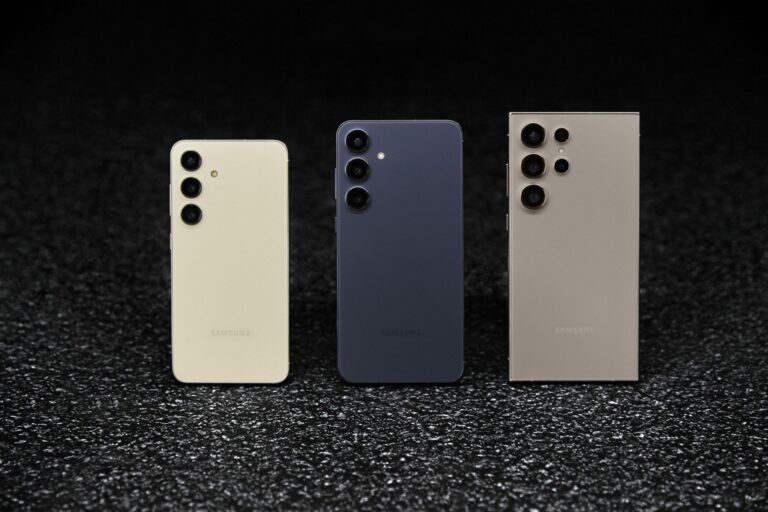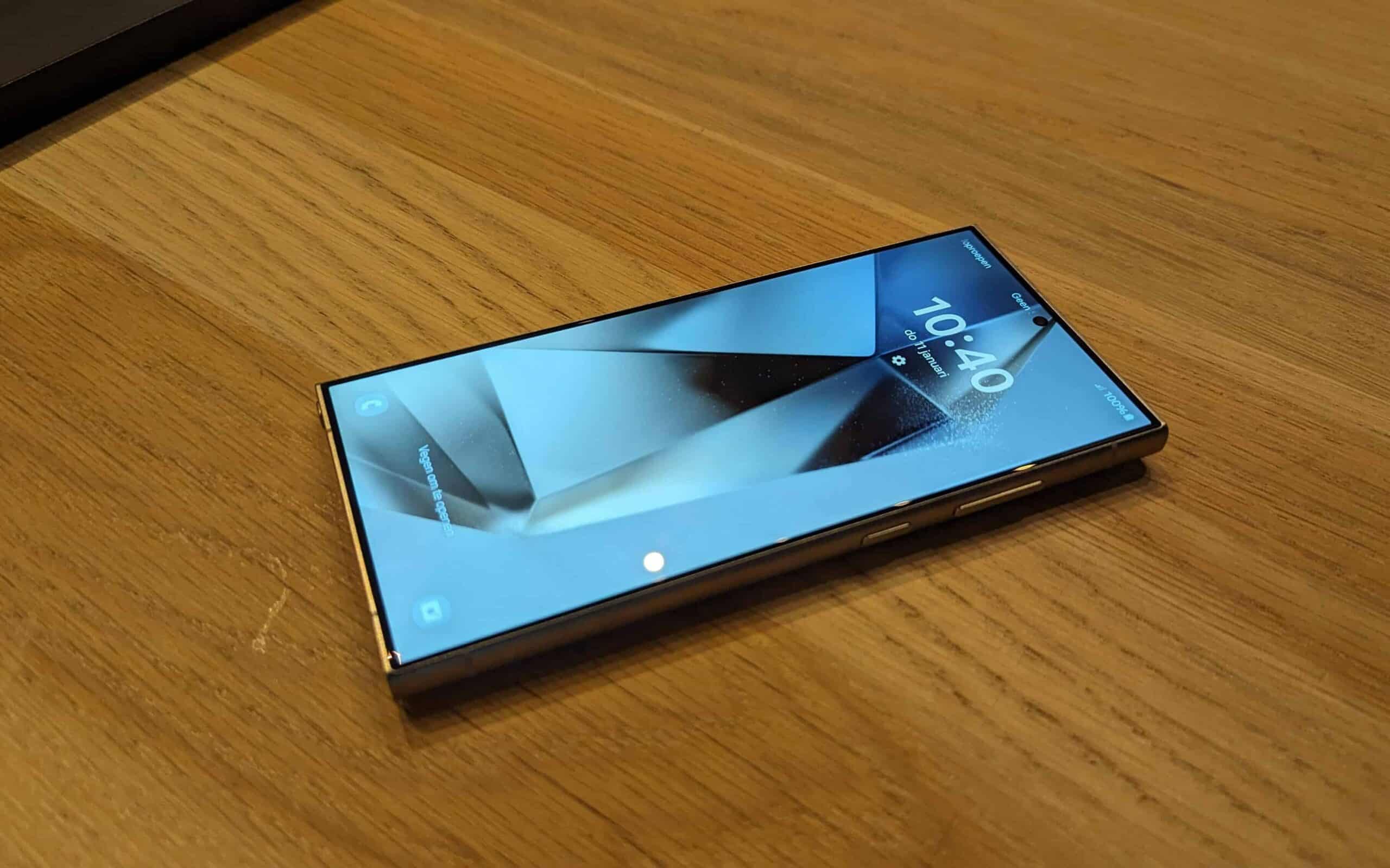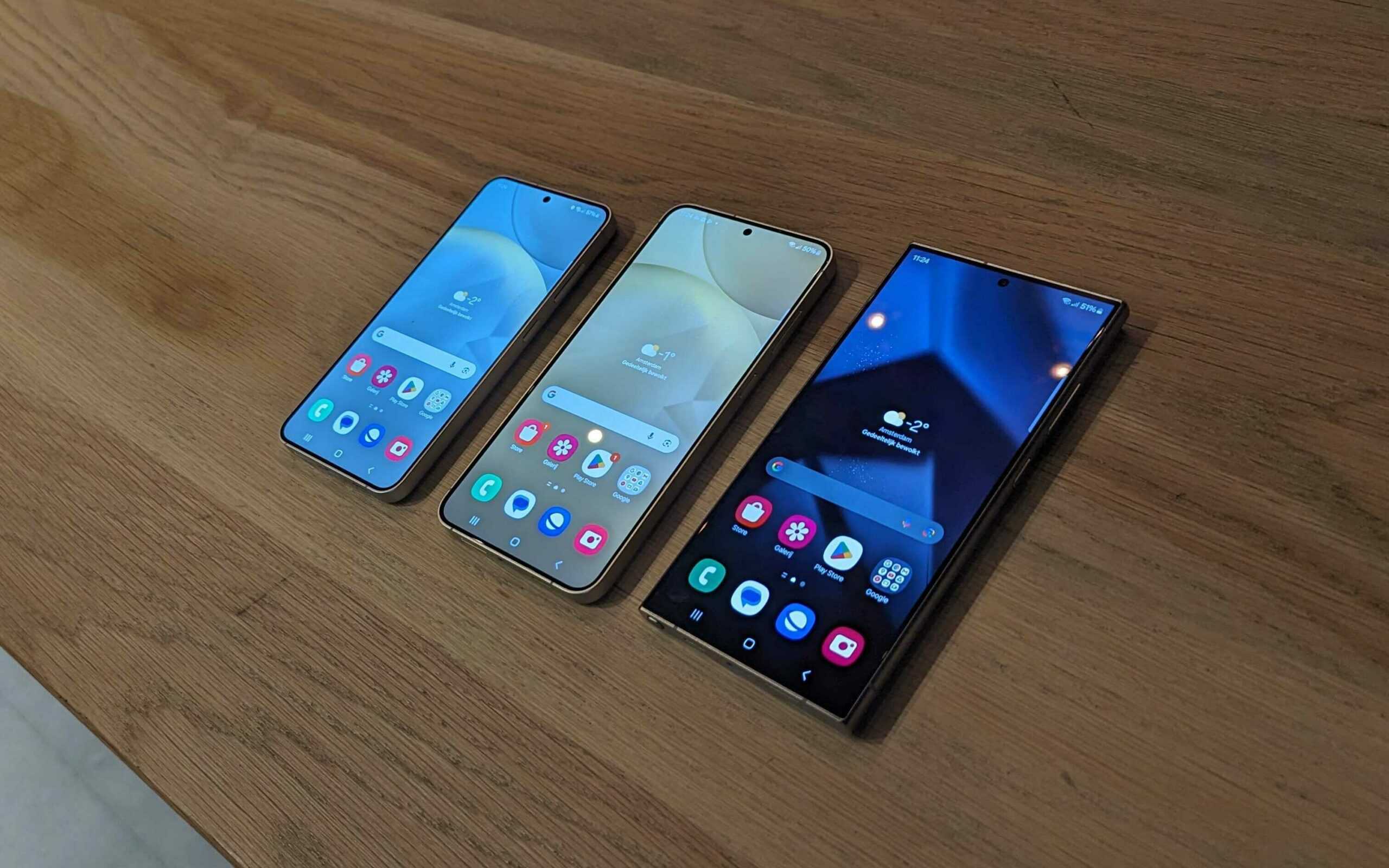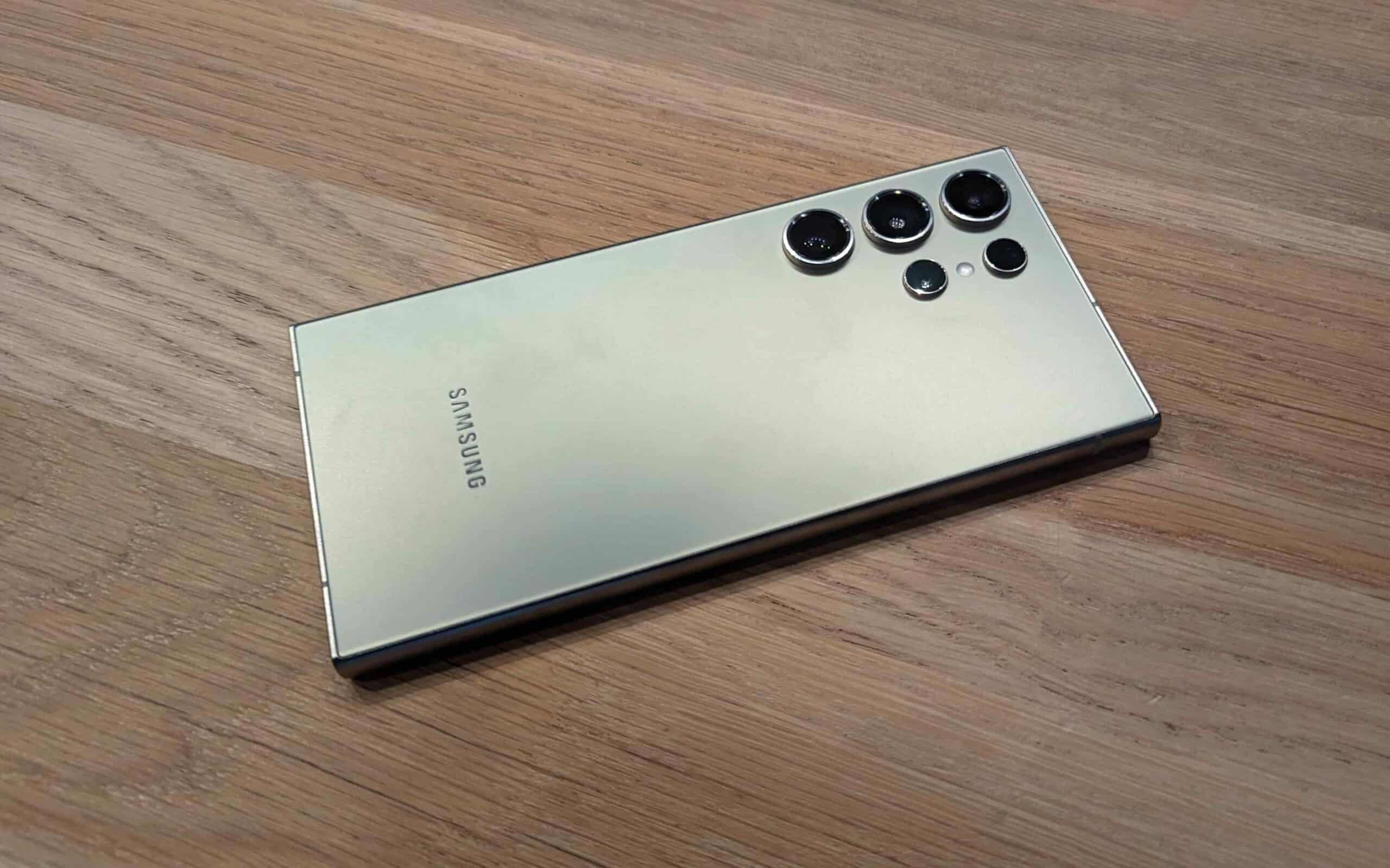Samsung is launching its latest line of Galaxy smartphones today. With the S24 series, it has asserted that the “era of AI” has begun. The brand new Galaxy AI offerings should make daily phone use more effective and easier. We had an early look to see what it’s all about.
The differences between the S24 line and its predecessor are subtle. There are new colour options that stand out, but otherwise the changes are subtle. From now on, the regular S24 has flattened sides and a smoother curve to its angles. This design choice is said to have emerged from ergonomic considerations, with the end result that this model looks even more like an iPhone than before. Regarding the S24 Ultra, the screen is no longer curved at the sides, but Samsung is following the trend of returning to flat smartphone screens. The motivation behind this is to allow edge-to-edge writing with the still included S-Pen.
Tip: Review: Samsung S23 flagships flex their muscles
Also, for the regular S24, the display has an even smaller bezel than before. That wasn’t a pain point at all for the S23, as it happens, but Samsung is proud to report that it now has the thinnest bezel ever. The screen features Armor Aluminum 2.0 protection. With the Ultra, the protection is even stronger in the form of Corning Gorilla Armor 4, which is 75 percent less reflective and four times more resistant to scratches. Henceforth, the Ultra has a titanium body, which is also reflected in the colour choices.
The screens themselves are brighter than ever, with pixels providing 160 percent more light than before. Below the line, that means 2,600 nits, including an option for better visibility in daylight. Again, screen brightness was already a strong point of the previous generation of Galaxy phones, but so here is another improvement.
The hardware itself is a lot more sustainable than before, with large amounts of recycled cobalt and rare metals.
Galaxy AI: a new era
For Samsung, however, the priority this time is not design or specifications, but Galaxy AI. The company argues that a new era has begun. Where before we talked about the “Era of Internet” and “Era of Phone Camera,” there is now the “Era of AI.” High expectations have thus been set, time to see if the phones can match them.
AI applications are everywhere within the OS. A long press on the home button activates an universal Click to Search function, developed in partnership with Google. In fact, this is essentially Google Lens underneath, but applied everywhere. Anyone watching Netflix and seeing an appealing pair of pants can circle it and search for it. The same goes for a castle in the distance, a logo of a company, et cetera. The search results, then, are not unlike what Google Lens serves up: often impressive, sometimes not quite what you mean. The big difference now is that this functionality no longer requires a separate app. Every app supports the feature, or rather: the OS creates a layer on top of every app that enables it.
Language features
The original purpose of phones, calling, is also being tinkered with by Samsung. Although we haven’t been able to test it out yet, it sounds promising. Live Translate would allow conversation partners to communicate with each other in completely different languages. While one person talks in English, the other can hear a Spanish translation of it all in real time. The same is then true the other way around. Samsung promises that all call data remains on the phone.
Chat Assist can adjust the tone of messages and is built into the Samsung keyboard. For example, those who find themselves sounding a little too informal to a business contact in WhatsApp can adjust this with a single press of the suggested alternatives. Real-world day-to-day usage will have to show how useful this feature is: for many, it will take a great deal of getting used to before sending an AI-generated message habitually.
AI can also make itself useful on the Internet if it’s just summarization you’re after. Within the Samsung browser there is an option to summarize text on a website. This often worked in our brief tests, but not on some webpages. On our site, some text was easily summarized, while others were blocked. According to Samsung spokesmen, some design elements on sites may still cause problems.
Samsung notes can also be transformed with a quick action. A list of notes can be reformatted with mostly the desirable end result. It seems that once you know the limits of AI functionality in this regard, better end results can also be found. The promise is “do less, but outstanding.” With tutorial screens in various applications, the user is informed how best to utilize these features.
There is also Transcript Assist, which can convert audio recordings into written text. Since Google offers the exact same functionality in its own Recorder app, we suspect the same underlying technology is involved. If not, it will be hard to beat the operation of that app (in Pixel phones).
The camera: also AI
On the hardware front, the camera specs have changed slightly. With the Ultra, the ability to zoom up to 10x optically has vanished. In its place comes a 5x optical zoom, which with the help of better software should still take better pictures. Thanks to the so-called ProVisual Engine and the Adaptive Pixel Sensor, the camera is said to be even more proficient than before. Nightography also gets an upgrade.
AI functionality is diverse when it comes to photos and videos. First, AI Multi-Frame Processing and AI Super Resolution should ensure that the final footage is sharper than ever. In addition, videos can be placed in an artificial slow-motion mode afterwards.
Photos taken at an angle can also be corrected afterwards with AI assistance. In the process, the image is enhanced with AI-generated edges, which came across as quite convincing in our brief test. What is odd, however, is that only this slanted-to-straight correction allows for AI generation. We wonder how long it will be before it’s possible to simply increase the window to expand the photographed scene.
The cameras on the S23 Ultra in particular were excellent, but social media apps destroyed their quality before they could be uploaded. That is now remedied: even HDR photos should end up on Instagram and Facebook without loss of quality.
Support, security
Samsung Knox is back as a platform to uniformly secure work phones. A new feature has been added thanks to the AI addition: there’s now an “advanced intelligence” option which offers the ability to disable online data processing. This is presumably at the expense of certain AI applications, though, since many of the workloads take place thanks to a cloud service.
Knox will also now support passkeys, a useful addition to give users extra security.
Tip: What are Passkeys? Removing the human element from authentication
Those who buy a phone from the S24 line can expect seven generations of OS updates and seven years of security updates.
(Preliminary) conclusion and price point
There was little wrong with the S23 line, but relatively many consumers didn’t opt for the cheaper options. Meanwhile, Apple has now passed Samsung as the largest global smartphone maker. Samsung’s Ultra was in demand, though.
The new price points reflect this state of affairs. The regular S24 is 50 euros cheaper and is available from 899 euros, but like last year, we must express our dissatisfaction with the fact that the cheapest option offers only 128GB of storage. Those who want 256GB will have to pay 959 euros. Still the regular S23 uses 8GB of RAM. The battery has been increased by 100 mAh to 4000 mAh.
The S24+ is also 50 euros cheaper and starts at 1149 euros (256GB). A storage upgrade brings the price to 1269 euros (512GB). Each S24+ does have 12GB of RAM instead of 8GB, a useful improvement. Also, the battery is 200 mAh larger (now 4900 mAh).
Meanwhile, the S24 Ultra has gone up in price from its predecessor. With 256GB storage, this variant costs 1449 euros, with options of 1569 euros (512GB) and 1809 euros (1TB). Here, as with the S23, there is 12GB of RAM.
These price changes are fairly predictable. Samsung will hope with it that more users will go for an upgrade than last year. In doing so, we do wonder if all the AI features presented will remain exclusive to the S24 series. If they (mostly) also end up in the S23 series, those phones are still extremely attractive.
In addition, we have yet to be convinced about the Exynos 2400 SoC. Samsung thankfully chose to equip all S23 phones with a Snapdragon 8 Gen 2, but that is now a thing of the past. Only the Ultra uses a Snapdragon 8 Gen 3, the other versions are equipped with Samsung’s own Exynos. Samsung promises that performance will be similar between the two.
Previously, these chips were notorious for an underwhelming performance level and disappointing battery life. We were not able to test that difference in an hour’s time, (besides, these were prototypes) but it will certainly be an interesting point for a review. Ultimately, all AI features may be largely undone if Samsung fails to deliver on its performance promise in this regard.



